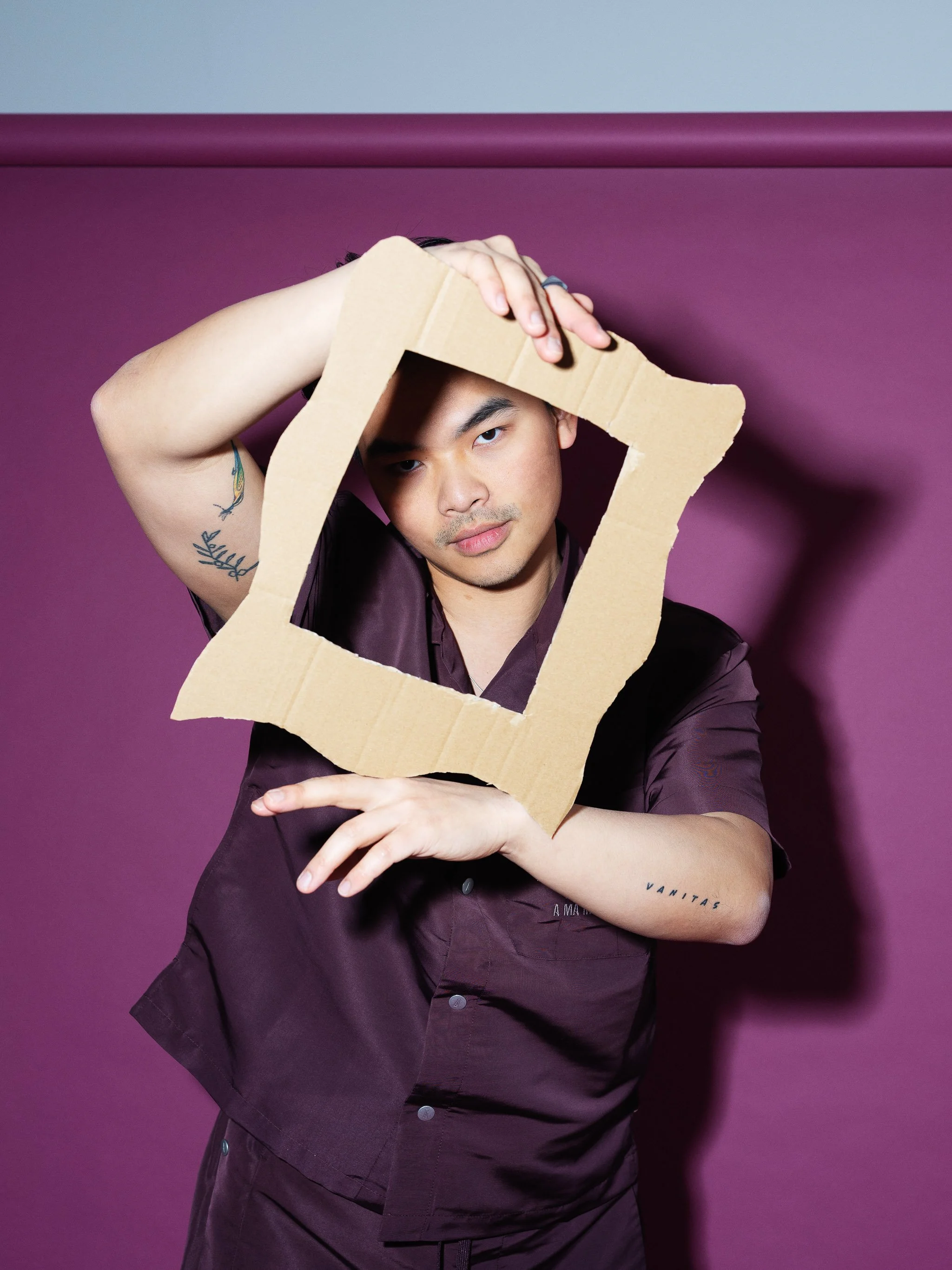Karl Mok
Design from the inside out
Interview by Alison Cowie
Photographs by Christopher Owens
It’s one of the most demanding degree courses you can take but Karl Mok wants to make the world of architecture more transparent and accessible. And he’s doing it with the help of his friends.
It was the weekends spent visiting show homes in his native Malaysia that first got Karl Mok interested in architecture and design, he reveals to me days after the first episode of BBC’s Interior Design Masters, featuring the now Newcastle-based architect and teacher, aired.
Karl’s mum – who worked in business before her son was born - was the driving force behind these visits and she was happy to critique each one they went to.
“My mum’s always been very design focussed and, in a different life, I think she’d have liked to have been an interior designer,” Karl explains.
“We’d get dressed up and go see these show homes that we couldn’t afford. My mum always pointed things out and explained why they did or didn’t work as a layout.
“It really helped train me to look at space.”
Such experiences inspired young Karl - who had always been a creative child – to apply to Newcastle University to study architecture.
Unusually - and perhaps a direct result of his mum’s influence – Karl was always more interested in the interior of a building than its exterior. For his dissertation, he designed a home from the inside out.
“Essentially, the outside of the building was irrelevant because it was the interior dictating it,” he adds.
Having completed his degree – widely seen as the most demanding and lengthy higher education course after medicine – Karl looked to take his first steps on the architectural career ladder in his adopted home of Tyneside.
Like most of his peers, Karl went into traditional practice but soon became frustrated by the restrictive nature of architecture in real life.
“At university, you’re encouraged to be as free as possible and open to new possibilities. You talk about reshaping spaces to reflect the complexity of society.
“But when you work in architecture, the reality is usually different. There’s so much regulation and legislation – which, of course, is important - but you get further and further away from designing the creative environments you worked on at university.
“I found that stifling and many of my peers working in larger practices felt the same.”
As a result, Karl joined forces with a business partner to launch a design-led start up TA!LAB Design in 2019 with the help of Newcastle University Start Up Incubator. The aim was to inject more freedom into the creative architectural process by working with exciting young designers in interiors and architecture, and focussing on a clientele of small and medium-sized, particularly those based on the high street.
He managed this alongside his roles as an associate lecturer at Newcastle University School of Architecture, Planning and Landscape and a programme director at InvestIN, a national organisation that provides students aged 12 to 18 with immersive experiences of their dream careers.
Describing the ethos behind TA!LAB Design, Karl explains: “We were like the Mary Portas School of Architecture, working with small high street businesses who wanted to make impactful and unique interiors with limited budgets.”
TA!LAB Design worked with several independent retail and café owners, Tyneside Cinema, and developed radical installations for London Design Week. But as the pandemic hit, the commercial work dried up almost overnight.
This coincided with Karl’s business partner deciding to move back to her native Hong Kong to be closer to family, which has led the Malaysian designer to realign and rebrand the business.
The newly named Friends Studio has a greater focus on residential work with services including floor plan layout, planning permissions and building control, furniture and home décor selection, colour and material consultation and cost control delivered by a network of freelancers who manage their bite-sized workload alongside their regular jobs.
Providing more clarity on the architect’s role and how design decisions impact charges is a vital element for Karl, and he has adopted a subscription model for the studio.
Clients pay a monthly cost, depending on the project scale and services required, allowing them to better manage their budgets for the lifespan of the work.
“Subscriptions are unusual in architecture but they’re widely used by other design industries such as in graphic design or branding services,” Karl explains.
He continues: “Architects spend so much time trying to create the perfect package with a flat rate, and we inflate that cost because we're afraid of how many changes might happen along the way. But that’s putting the services out of reach.
“We need to rewrite the book so that people can access our services at whatever price point they can afford - even if that’s just for a month of work. You might be halfway through your build, run into a problem and just need some expertise for a few weeks.
“Obviously, if you’re making design changes all the time, it has an impact but if you’re upfront about how that will change the time and associated costs, it will be clearer to clients.”
“At university, you’re encouraged to be as free as possible and open to new possibilities. You talk about reshaping spaces to reflect the complexity of society. But when you work in architecture, the reality is usually different.”
By refocussing to the residential market, Karl has been pleasantly surprised to find clients are much more open to pushing design boundaries in their homes.
“Not that long ago, beige, magnolia and white were seen as the key colours to happy living. But people are realising that's not the case anymore.”
I think this started in the pandemic when people were limited to their houses and couldn’t go out or on holiday. They now want to bring Ibiza to Wallsend, which is fantastic.”
Friends Studio has since worked on several dynamic residential projects across Newcastle and London, such as a current project to transform a residential garage into a state-of-the-art gaming hub for a tech-savvy client.
The result of using freelance experts only when needed means that Karl is able to access an ever-increasing pool of innovative young designers, and the benefits are mutual for both parties.
“I get their skills while they’re able to work on exciting projects that they might not have been able to get in their daily work. This helps them build up their portfolios,” he explains.
With his Friends Studio concept established, Karl was on the lookout for a new challenge back in April last year when he saw an advert looking for contestants for Interior Design Masters., The BBC series is hosted by Alan Carr that sees ten talented new designers seeking their big break in the fast-paced world of commercial interior design.
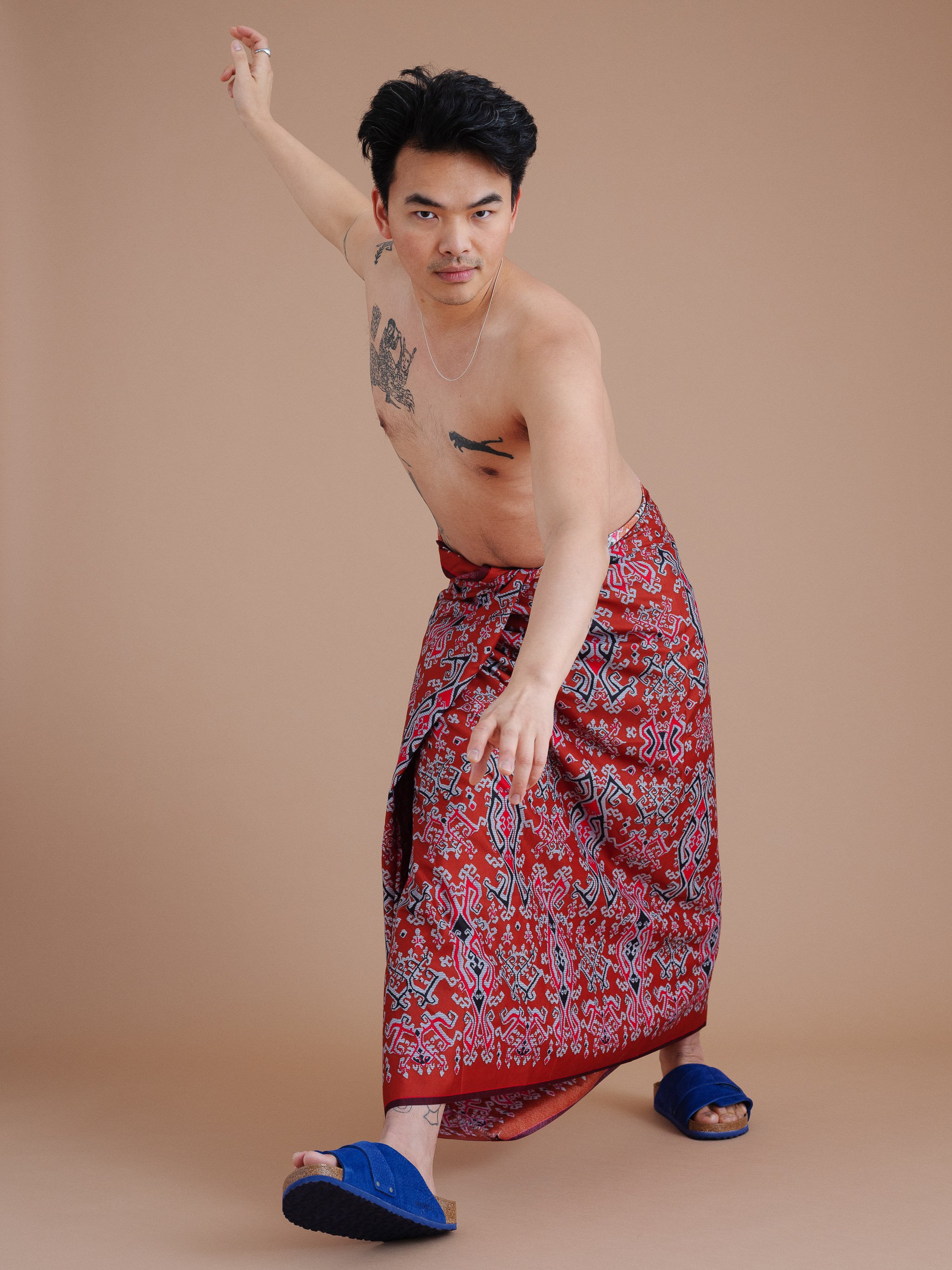
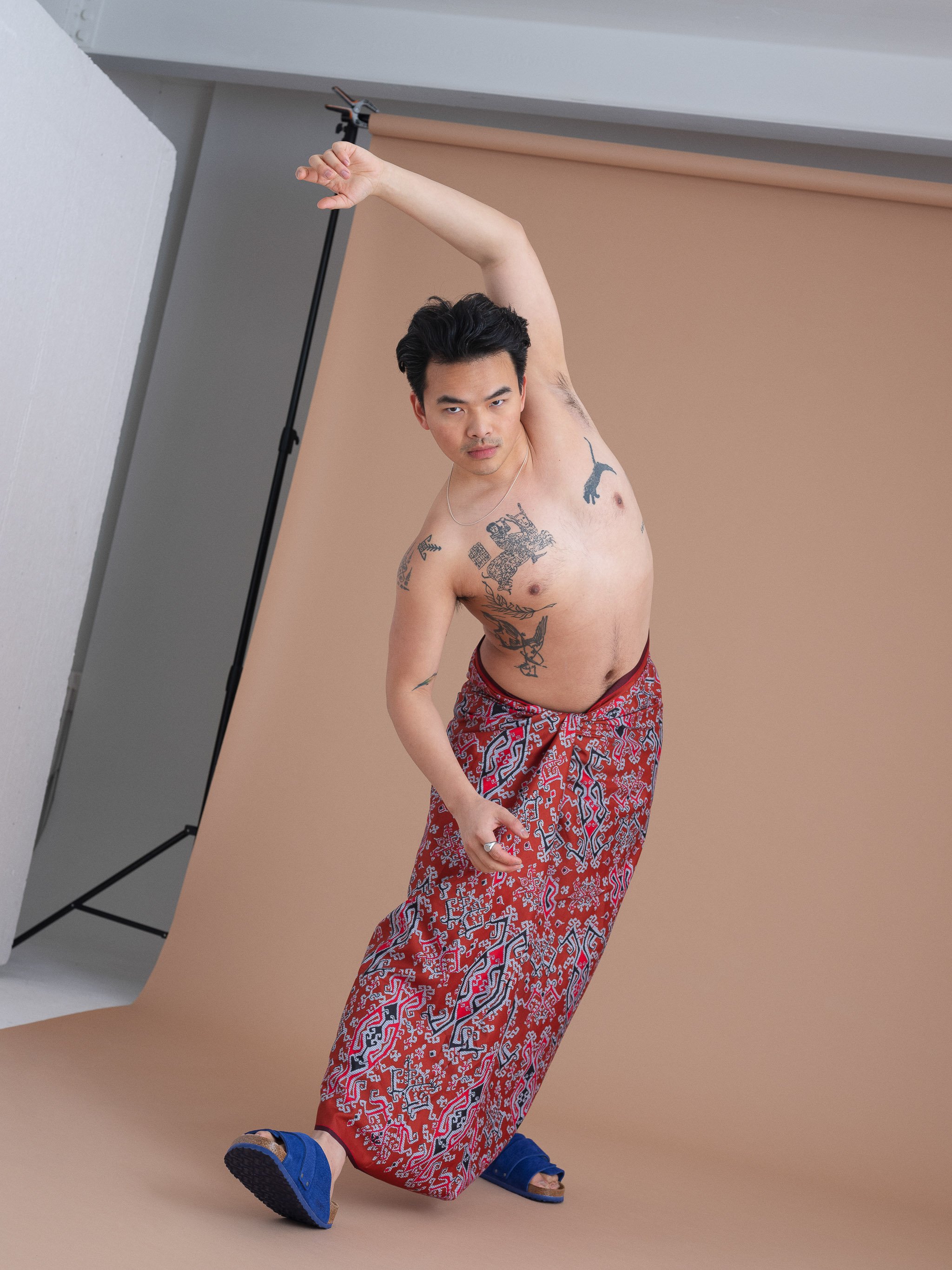
“The culture of overworking is very common in architecture school. We have 24-hour studios and people stay up all night working. Architecture is the hardest course in the UK, over medicine, so I want to emphasise the needs for students to stay healthy and take care of the basics.”
“Friends Studio was going well and the work was ticking over, and I found myself a bit bored of sitting behind a desk working on planning permissions,” Karl remembers. “When I saw the advert for the show, I thought it would be something completely different, so I applied. I don’t consider myself an interior designer and I knew the standard of the competition from previous series, so I never thought I’d get through.
“Surprisingly though, I kept getting called back, again and again. Then one day, I got a phone call to say they were coming to my house to interview me. I panicked. I knew that everyone would have beautiful homes but I was still in a tiny rented apartment. I went straight out to buy some stuff to make it more presentable.”
Despite Karl being the first contestant to leave the fourth series – thanks in part to an oversight in ordering materials meaning he couldn’t finish his ambitious first design – Karl describes the experience of the show as overwhelmingly positive.
He also reveals that producers – mindful of the potential adverse effects on those taking part in reality shows – have provided considerable support to him and all the contestants.
Karl is still in contact with everyone he met on the show – which was filmed last summer – and he reveals he’s in talks with several contestants about joining Friends Studio as freelance interior designers.
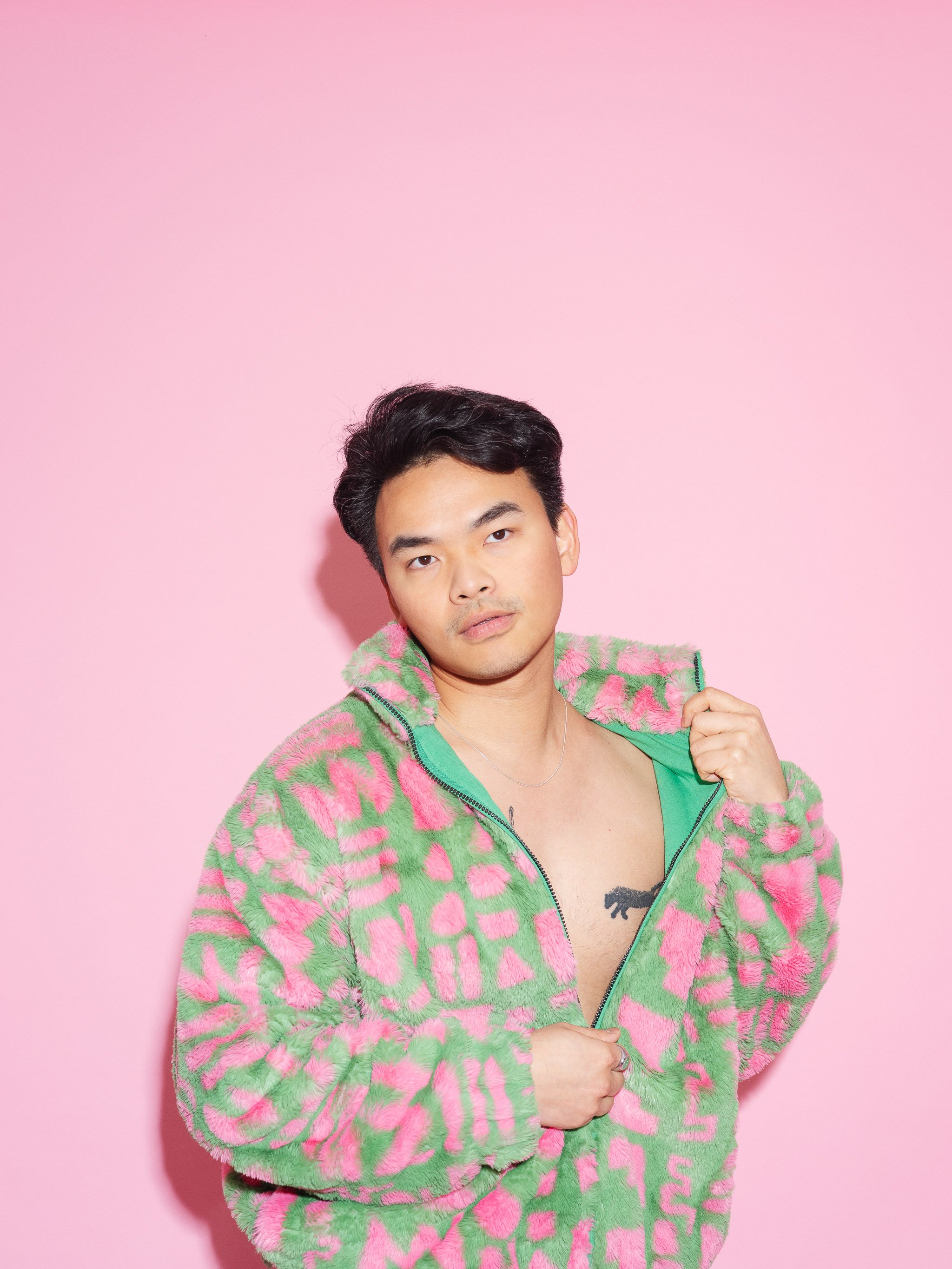
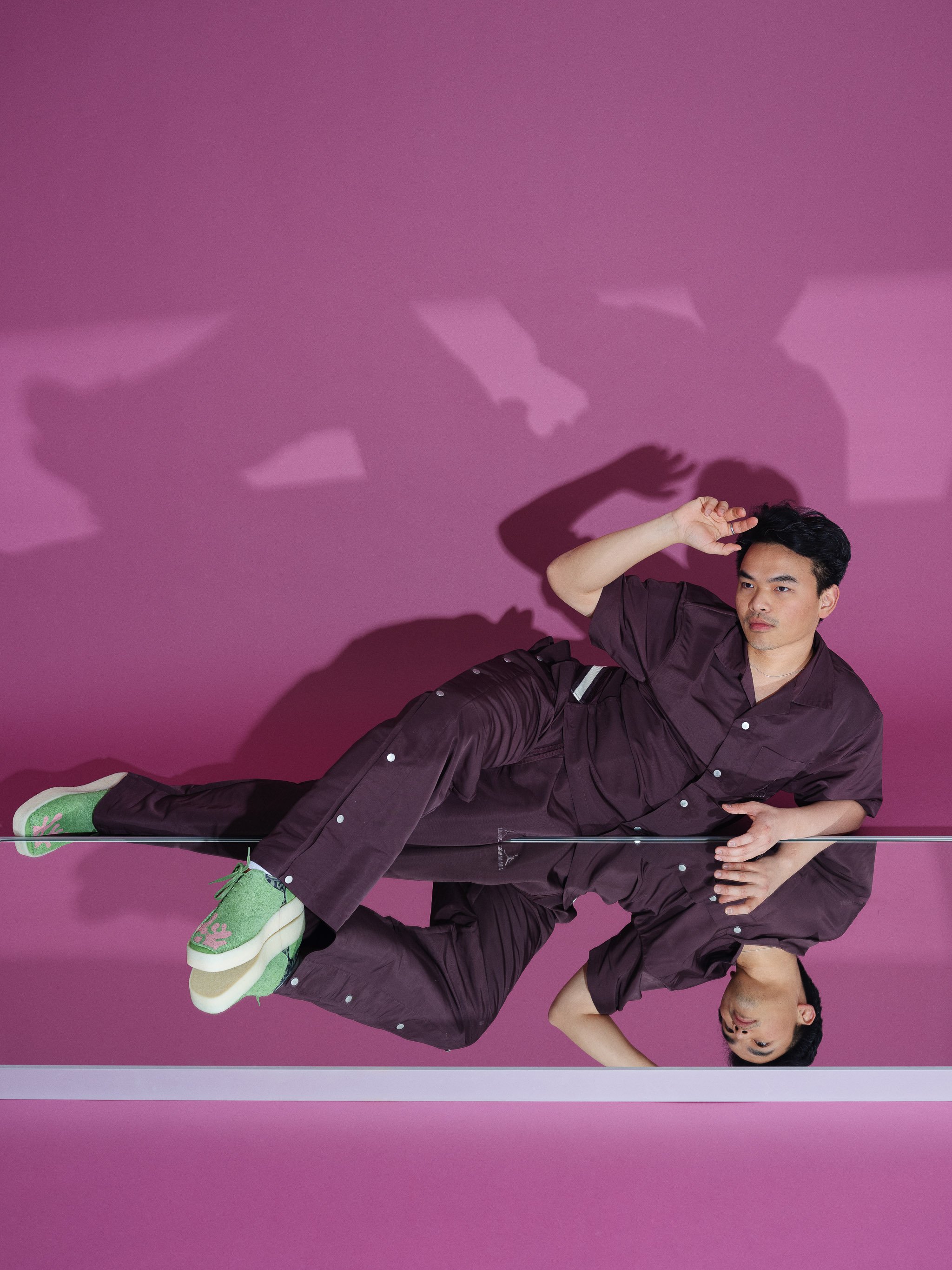


“Not that long ago, beige, magnolia and white were seen as the key colours to happy living. But people are realising that's not the case anymore.”
As for the future, Karl hopes his subscription model for architecture and interior design will continue to attract an array of clients, including more commercial work as the studio develops.
Through his tutoring at Newcastle University and InvestIN, he is also keen to instil a healthy work approach in the next generation of architects and designers.
“This actually came from appearing on the show,” Karl explains. “It was really tough and it got me thinking about my own health and the importance of staying fit and healthy when you’re a designer.
“The culture of overworking is very common in architecture school. We have 24-hour studios and people stay up all night working. Architecture is the hardest course in the UK, over medicine, so I want to emphasise the needs for students to stay healthy and take care of the basics.”
Karl maintains that architecture as a career needs a serious shake-up to make it more accessible.
“The position of the architect is a bit looser these days. There are product designers who become architects and interior designers who now do buildings.
“Where the creative sphere is heading, it’s moving away from the strict profession of architecture, and more into the hands of ‘non-building professionals’. Even the show that I was on was about transforming people who're not from an interiors background. I think that’s fantastic and this freedom is what the industry needs.
He continues: “For decades now, the architectural system has been about completing a seven-year qualification process - no negotiation. But that often makes it inaccessible to a lot of talented people. We need more specialisation early on. For example, if you want to be a regulations officer, that’s fine; we need more of those people. But that might not require doing a seven-year course.
“As a profession, we’ve become stale. If we want people with boundless creativity, we need to create opportunities for that. The whole system needs a revamp.
“Thankfully, the Architects Registration Board is starting to recognise it needs to be more flexible.”
Karl is clearly a highly driven, creative professional who, through Friends Studio and his teaching, is intent on championing good and sustainable design while promoting the need for radical change in the industry.
But, like his own approach to architecture and interior design, he wants to make his mark from the inside out.





